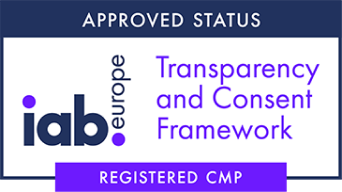Have you launched your Partnership Ads or collaborative ads? It’s time to make them more profitable. These ads, particularly Meta Partnership Ads, offer click-through rates up to four times higher than traditional creatives. But how can you reduce the costs of collaborative ads, improve ROAS and automate performance? Find the answers here.
Advanced strategies for reducing Partnership Ads costs
Before diving into concrete techniques, you need to understand that reducing the cost of collaborative advertising or Partnership Ads is not just a matter of budgetary arbitrage. It’s about optimizing every step of the process, from creation to delivery.
Recycle high-performance content
Rather than systematically creating new ads :
- Turn influencer posts or videos into sponsored ads tailored to different audience segments.
- Prioritize UGC content that has generated high engagement to maximize ROI with minimum investment.
- Combine several pieces of high-performance content in carousels or stories to prolong their impact and limit the creation of new assets.
With this approach, you reduce production costs. You also capitalize on messages that have already proven their effectiveness with the public.
Automate campaign management
Manually managing campaigns and collaborations with creators can quickly become costly and time-consuming. To optimize the profitability of collaborative advertising :
- Use tools to automatically publish ads, adjust budgets and track performance in real time.
- Set alerts on key KPIs to react quickly without constant manual intervention.
- Centralize creator payment management via the platform to avoid errors and delays.
Automated partner advertising significantly reduces operational costs and optimizes ongoing performance.
Pool and plan partnerships
When it comes to your influencer partners, establish long-term collaborations with designers.
- Select a limited number of designers to work on several successive campaigns.
- Negotiate long-term contracts to benefit from preferential rates and a stronger commitment.
- Align messages and content with brand values to create continuity with the audience.
This strategy reduces the cost of finding and negotiating new partners for each campaign.
Base targeting on affinity and interests
Precise targeting is at the heart of partnership Ads performance. Rather than targeting broad, generic audiences :
- Identify the subscribers of creators who share similar interests and behaviors to your target audience.
- Use affinity segments to reach engaged communities that are more likely to convert.
- Adjust audiences according to observed performance to maximize ROAS without increasing expenses.
This affinity-based targeting generates more conversions at lower cost. Here, advertising messages are aligned with the audience’s preferences and values.
Optimize and measure the effectiveness of Partnership Ads
Obviously, you’ll find it hard to reduce the costs of collaborative advertising if you don’t set up accurate tracking and reliable metrics. Without proper metrics, you’ll struggle to improve ROI even with well-designed paid campaigns.
Track key KPIs for advertising partnerships
To assess the performance of your existing Meta Partnership Ads campaigns, focus on the key indicators that directly translate into return on investment.
Click-through rate, CPA, ROAS, conversion rate… The aim here is to analyze the relevance of your current indicators. It’s no longer a question of “whether the campaign is working”, but of how to make it more effective within a constant budget.
Track brand indicators
In addition to immediate results, monitor the impact of campaigns on brand awareness and image.
- Evaluate the awareness generated by each advertisement and partnership.
- Measure advertising recall to see if the message remains memorable with your audience.
- Keep an eye onpurchase intent, a key indicator for anticipating future sales.
Identify and correct common errors
Even if your campaign is off to a good start, certain mistakes can have an impact on day-to-day management and budget control:
- Overinvest in high-performance creators without recalibrating the cost per content.
- Neglecting to analyze the real cost of acquisition after the test phase.
- Automate without adjusting performance criteria.
- Reuse the same content without assessing its long-term profitability.
Set up a quarterly advertising performance audit to identify budgetary drift before it eats away at your ROI.
Build an operational roadmap to reduce advertising costs
Have you finally laid the strategic foundations for your collaborative advertising campaign? Optimizing your advertising also means managing your advertising costs. It’s a process that must be built up step by step, following a clear and measurable logic.
Phase 1: Preparation and diagnosis (weeks 1 to 2)
If you want to launch a profitable advertising campaign, carry out a rigorous audit and make an intelligent selection of designers.
- Analyze past performance. Export Meta Ads data and isolate ads whose ROAS exceeds 3. These are your “winning models”.
- Audit your previous partnerships. Calculate, for example, the actual cost per conversion (budget spent ÷ sales generated).
- Look for creators with high engagement rates. Choose those with 3 to 8% engagement rather than accounts with 100,000 inactive subscribers.
- Update your Meta Business Suite to integrate the “Partner Ads” function. This simplifies distribution, audience sharing and performance tracking.
A rigorous preparation phase avoids 50% of the costly errors observed at launch.
Phase 2: Testing and calibration (weeks 3 to 6)
During this test phase, the aim is to validate the right combinations of creator + content + targeting before ramping up.
- Launch your first tests with 2 to 3 designers with a small test budget of €200 to €300 per designer. Choose complementary profiles.
- Createseparate ad sets for each partnership to measure each creative’s cost per result. Don’t mix several influencers in the same campaign at the risk of losing visibility over their respective performances.
- Test different hooks and formats (vertical videos, carousels, short testimonials…). Record your tests in a simple dashboard (Google Sheets or Notion) to track trends.
- Fine-tune targeting according to audience typology. Keep only audiences with a cost per add to cart of less than €2.
The key here is measurement. What you test today will save you money tomorrow.
Phase 3: Scale-up and optimization (from week 7)
Once the winning campaigns have been identified, it’s time to ramp them up, but with method. The classic mistake is to double budgets at once. The algorithm goes haywire and costs soar.
It’s better to increase gradually and automate what can be automated.
- Increase budgets in increments of, say, +20% per week. If your costs rise after a budget increase, go back and stabilize before launching again.
- Duplicate successful campaigns rather than modifying them. Keep at least 3 to 4 ad sets active in parallel to spread the risk.
- Strengthen your relationship with your top designers. A quarterly collaboration costs up to 30% less than a series of one-shots.
- Set up acontinuous optimization loop. Include a weekly “data point” to adjust parameters with the marketing + influence team.
Scaling up is not a race against time. It’s a methodical process, with each step consolidating profitability.
Phase 4: Automation and intelligent control (week 10 and beyond)
The home stretch: sustainable management.
Your ultimate goal is to keep costs under control over time, without micromanaging each campaign.
- Automate your management rules in Meta Ads. These micro-rules can save up to 4 hours of management per week.
- Centralize your reporting in a single table. Multi-influencer management becomes much simpler and more visual.
- Reuse the best creations. Recycling successful content costs 70% less than producing new content.
- Analyze your distribution costs by creator type. Ultimately, create a database of “high-performing creators” for your future Meta Partnership Ads campaigns.
An automated, well-monitored campaign guarantees controlled advertising costs over the long term.
Reducing the cost of collaborative advertising or Partnership Ads isn’t a matter of “pulling down”, it’s a matter of steering more finely. By combining precise parameterization, exploitable data, structured testing, intelligent automation and adapted content, you can turn your advertising budget into a profitable investment.
Casaneo supports you in your data-driven advertising strategy.








